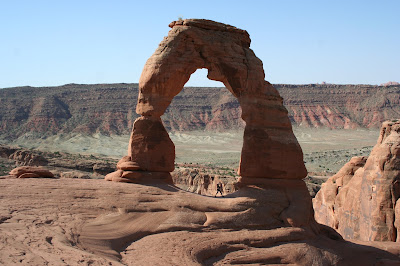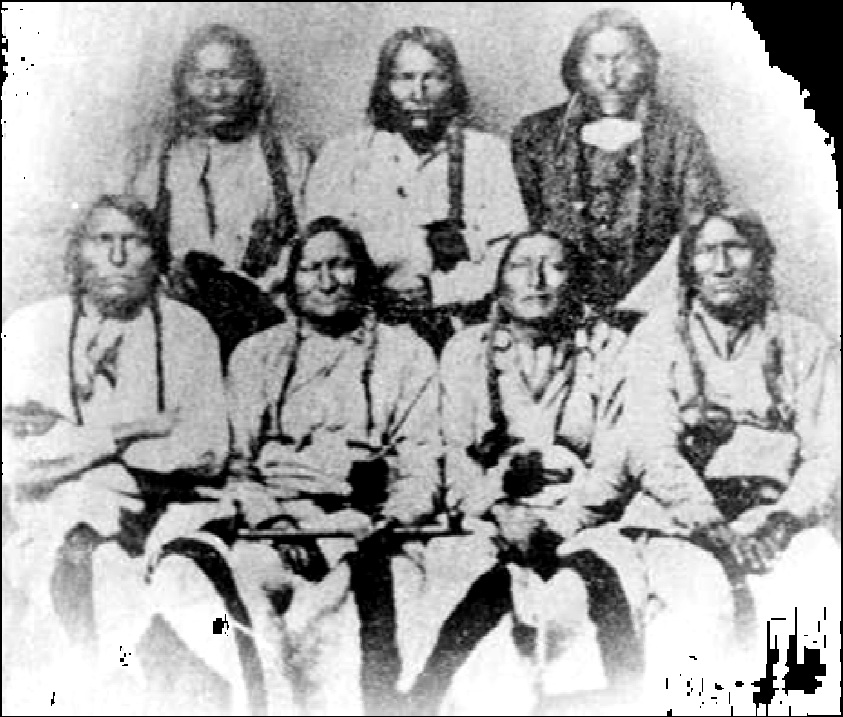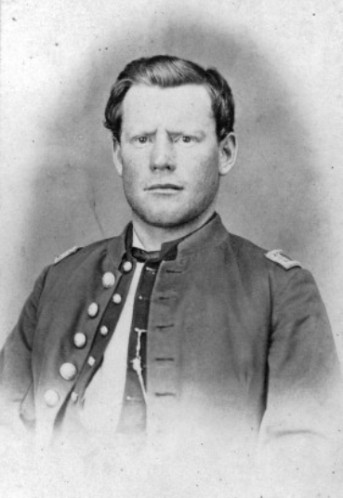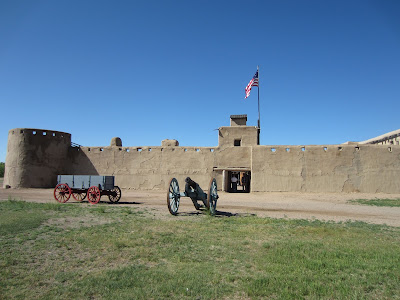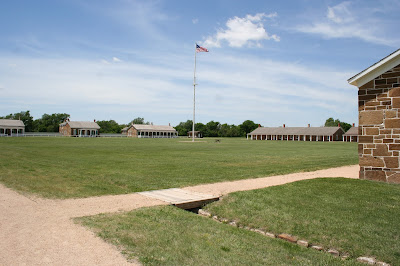Oregon National Historic Trail from Independence, Missouri through Nebraska, Wyoming, Idaho, and Oregon.
On our Interstate highways, we easily drive as many miles in
one day as the travelers along the Oregon Trail struggled to cover in a month.
From Independence or Westport on the Missouri River to the Willamette Valley in
Oregon, this 2,170 mile route challenged even the most hardy emigrants. The
slow pace, the dusty and rocky road, the dangerous fords and high passes, the
monotonous daily grind of hard work, the physical discomfort and death, all of
these factors challenged the men, women, and children who set off for a new
life in Oregon Country.
| Map of the Oregon Trail (www.historyglobe.com) |
Native peoples have lived in this region for over 10,000
years. By the turn of the 19th century, some of the tribes who called
it home included the Nez Perce, the Walla Walla, the Cayuse, and the Warm
Springs. Europeans first became attracted to the land for its fur, and trappers
and traders working for the English Hudson’s Bay Company started taking beavers
in the area in the early 1800s. In response to the rich trade, the Hudson’s Bay
Company established an outpost at Fort Vancouver in 1824. Missionaries followed
the mountain men, and then farmers sought the fertile Willamette Valley. By 1830s,
the first settlers arrived and in 1843, more than 1,000 emigrants braved the
six month journey. More soon followed. In 1852 alone, 50,000 emigrants traveled
the Oregon Trail. From 1840 to 1880, approximately 300,000 people made the
trek. This transformed the region.
| Nez Perce trading with Mountain Men (James Ayers Studios) |
Reasons to Emigrate
Why leave the U.S. in the 1840s? A financial panic in 1837
devastated the economy, and disease (especially malaria and cholera) plagued
the Mississippi River Valley. Oregon boosters back east extolled the virtues of
the Willamette Valley with one man claiming that pigs ran around fully cooked
with knives and forks already stuck in them, ready to eat. To such fanciful
tales, those looking for an easier life flocked to the Oregon Trail starting
points on the Missouri River.
Oregon Country was contested territory, lived in by Native
Americans, and claimed by both the British and the Americans. Even before the 1846
treaty with Britain established U.S. ownership, emigrants started pouring into
the territory. The massive influx of European Americans disrupted tribal
communities and lives. Exchanges occurred as Native Americans traded with and
aided the travelers, sometimes giving them salmon, their first taste of that nutritious
and sacred fish. Without such aid, some pioneers would have died.
The Indians also protected their ancestral lands and ancient
ways of life, sometimes with force. Treaties with the United States, sometimes
abided by, sometimes not, forced them onto reservations. Massacres happened,
like at the Whitman mission in 1847, and battles occurred, like with the Nez
Perce’s attempt to escape forced relocation onto a reservation in 1877. Their epic
1,170 miles (1,880 km) flight across four states is preserved by the Nez Perce
National Historic Trail. The legacy of contact and conquest continues to impact
the native peoples of the region.
Traveling on the Oregon Trail
From the dairies of the emigrants, we learn of their trail hardships.
One woman wrote that she had passed twenty-one graves that day. Death came on
the trail in many ways. Some died from accidental gunshot wounds, others from
being run over by a wagon. Deadly illnesses like cholera swept through the parties,
since water holes were scarce at times and polluted by earlier sick people or
animals. Attacks by Native Americans
defending their lands or hunting grounds did happen; however, few pioneers died
from such exchanges. In a study by trail historian Robert Munkres of sixty-six trail
diaries written before 1860, he found nine eyewitness accounts of hostile
attacks.[1]
Trail travel tested everyone. Emigrants gathered at
Independence or Westport near Kansas City in the spring. Using techniques
perfected on the Santa Fe Trail for prairie traveling (see the posting from May
16), most trains left in late April or May. By then, the prairies had started
to green up with fodder for their draft animals, and the land had dried out from
the winter and spring precipitation.
Traveling on the Oregon Trail was not like driving the
Interstate today. The historic trails were braided, with multiple routes to a
destination. Since a wagon train might have up to 100 wagons, they sometimes
traveled four or five abreast. Or a group might split off and seek an
alternative route which they heard was better. Deep ruts of the historic trails
still exist, carved into the landscapes by the iron rimmed wheels and plodding
hooves of draft animals. At those places today, often at isolated sites with a
stiff wind bending the sage brush, I can still hear the creak of the wagons,
the groan of the overloaded axles, and the complaining moans of the oxen. At
places like this, the past comes alive.
 |
| Wagon on the trail rut near the National Historic Oregon Trail Interpretive Center, Baker City, Oregon (Photo by Hunner) |
The best animals to pull wagons loaded with 2,000 pounds of
goods were oxen, slow but hardier than horses or mules. For the six month
journey, families stocked up with 200 pounds of flour, 150 pounds of bacon, and
other food essentials. They also loaded up their household goods like furniture
and stoves, clothes, and farm tools and seed stock.
 |
| Exhibit at the National Historic Oregon Trail Interpretive Center, Baker City, Oregon (Photo by Hunner) |
From Kansas, the trail went through southern Nebraska along
the Platte River, past Chimney Rock and Scottsbluff and then into Wyoming. Fort
Laramie offered respite, supplies, and a sense of protection from the imposing
prairies. As the Rocky Mountains loomed
to the west, the next major point was South Pass, a surprisingly gentle path
through the mountains. Once over South Pass, the emigrants passed the point of
no return; however, the hardest part of the trail lay ahead.
Winding through the mountains of the West proved hard. Long
stretches without water (and when found, might be tainted by dead animals),
clouds of dust thrown up by the many wagons in a train, graves on the side of
the trail, all these wore down the travelers. Daily routines started before
daybreak with cooking the day’s food using dried cow chips for fuel, taking
care of the livestock, yoking the oxen up, then walking fifteen or twenty miles
-- often until dark. Few people rode in the wagons to avoid burdening the oxen
further. Next day, repeat the same routine -- for six months or more.
 |
| Worn out travelers on the Oregon Trail (Photo at National Historic Oregon Trail Interpretive Center, Baker City, Oregon) |
I caught the Oregon Trail in eastern Idaho at Soda Springs.
I jumped on and off Interstate 84 through Idaho and Oregon at places like
Glenn’s Ferry where the emigrants first encountered the Snake River, a
tributary of the Columbia River. Glenn’s Ferry was a dangerous ford of the
Snake River in central Idaho, and even though three islands aided the crossing
at Glenn’s Ferry, most travelers could not swim. They caulked their wagon beds,
forced their reluctant livestock to plunge into the cold waters, and prayed.
 |
| Glen's Ferry across the Snake River. The trail angles down from left to right on the other side of the river. (Photo by Hunner) |
Some
avoided such fords and stayed on a more difficult route south of the Snake.
Either way, travelers climbed steep hills and then descended in heavily loaded
wagons with logs chained to their axles as brakes. From here to trail’s end at
Oregon City, the Snake and Columbia Rivers guided the weary travelers. Getting
closer to the Willamette Valley, the travelers faced more suffering over the rugged
terrain of the Blue Mountains, the Cascades, and the threat of the coming cold
weather.
 |
| Roadside exhibit at Celilo Falls, Washington (Photo by Hunner) |
The treacherous falls at Celilo and the Dalles on the
Columbia presented challenges to all of the travelers. On the Columbia River at
the Dalles, the Oregon and the Lewis and Clark National Historic Trails merge.
We will explore the Lewis and Clark Trail in an upcoming posting. The final
section of the Oregon Trail entailed either floating down the massive and
tricky Columbia River or slogging on the rough Barlow Road through the forest
around Mt. Hood. Dr. John McLoughlin, the Factor at Fort Vancouver for the
British Hudson Bay Company, often sent boats to the rapids at the Dalles to
ferry the ragged travelers to the outpost. We will return to McLoughlin, Fort
Vancouver, and the Hudson Bay Company in the next blog.
As a trail of migration, the Oregon Trail (and the
California, Lewis and Clark, and Mormon Trails which shared parts of the same
routes) opened the West for settlement. As I sped near the Oregon Trail on Interstate
84 in Idaho, Oregon, and on Highway 114 in Washington, I easily crossed rivers
and canyons, swiftly climbed the steep grades, and coasted down the other side.
I marveled at those who walked the 2,000 miles, facing months of hard travel,
privation, illness, and death. These hardy families of farmers and merchants
established vibrant communities on the West Coast. It is an epic story of
determination, grit, and cultural exchanges that helped make the United States
what it is today.
Congress approved and President Carter signed into law the 2,170
mile long Oregon National Historic Trail on November 19, 1978.
 |
| Wagons at the National Historic Oregon Trail Interpretive Center, Baker City, Oregon (Photo by Hunner) |





